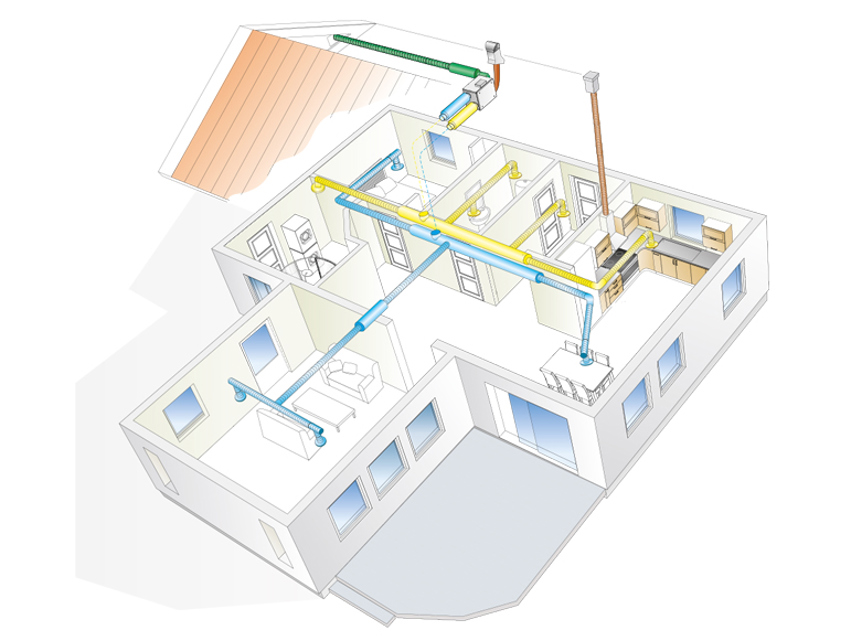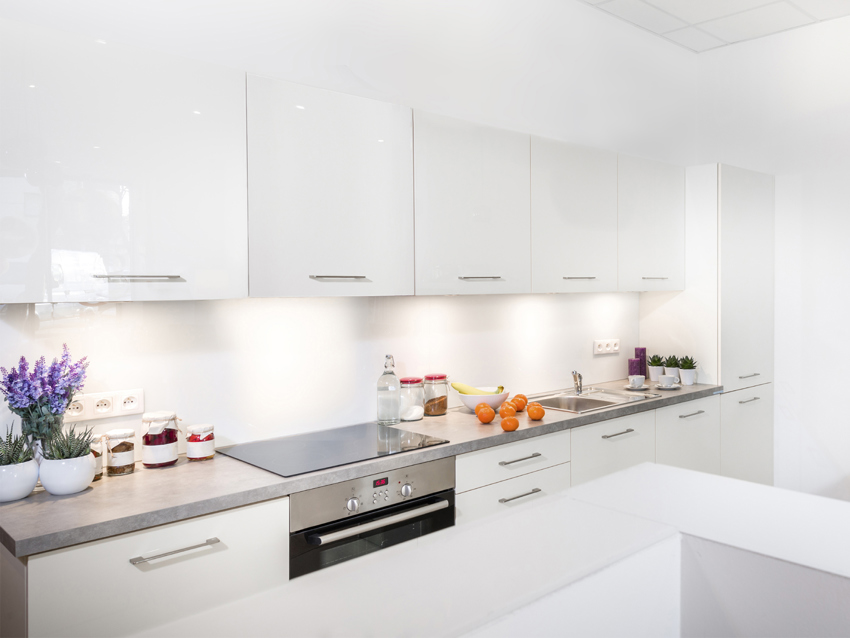Detached and terrace houses
In response to current requirements for energy performance in buildings, properties are becoming increasingly airtight, which means that stricter demands are made for ventilation in order to prevent damp and mould. Controlled balanced filtered ventilation is virtually a must today. The fact that it also greatly improves indoor comfort is, of course, only a plus. Today, ventilation systems are at least as important as your other property systems.

Many options
For detached houses there are many options in the way of units, depending on the installation location. For many homes, the choice falls on a horizontal unit for installation in the attic or vertically in a laundry room. In small houses, a “spice rack unit” in the kitchen is also a good solution. In case of ducting difficulties, there is the option of mounting the unit to an exterior wall for minimal ducting combined with active transfer diffusers. However, more than one unit may be needed to meet the air flow requirement.
The cooker hood is a key component of the ventilation system
Installation and investment costs can be reduced if the ventilation unit’s extract air fan is also used for the cooker hood’s air flow. The system can be controlled from the cooker hood, and senses when the cooker hood has been activated when it then compensates with a supply air flow to maintain balance in the home. This is yet another key feature of current airtight housing. The opposite feature is triggered when using the centralised dust extractor or when the fireplace is lit

Advantages of balanced ventilation in detached houses
-
Modern airtight homes should be served by controlled, balanced supply and extract air ventilation for occupant well-being
-
In homes ventilated only by an extract air system, there is no guarantee of achieving the required volume of fresh air in each room
-
Fine-mesh filtering keeps pollen and exhaust gases out, creating a healthy indoor climate
-
With a demand-controlled unit installed to respond to humidity, CO2 or VOC levels, the unit auto-adapts to requirements